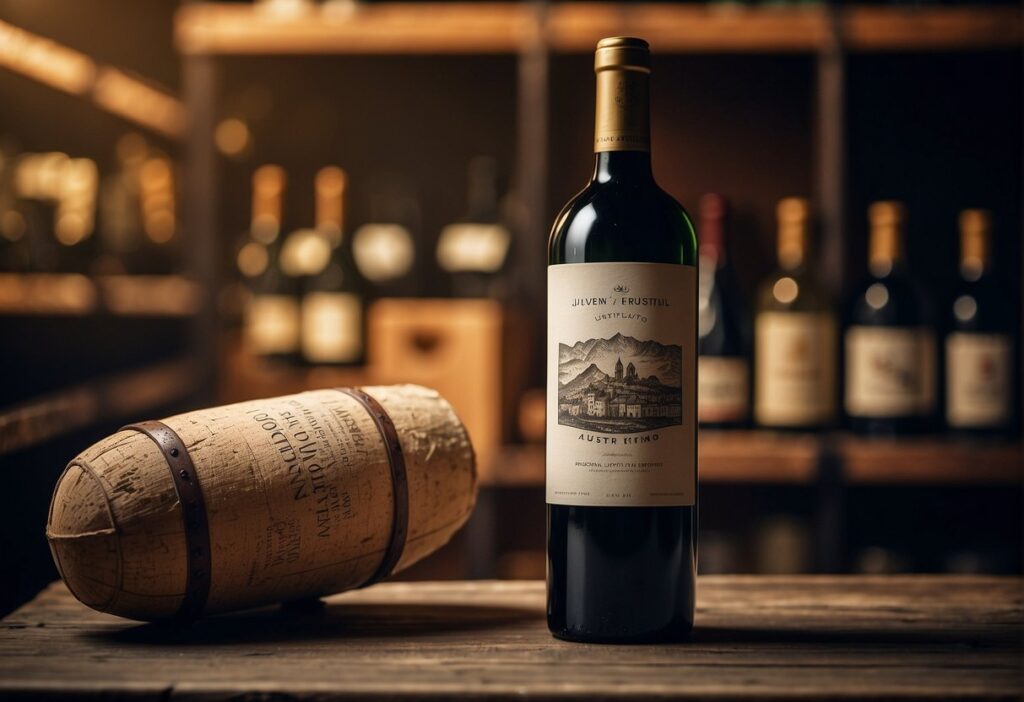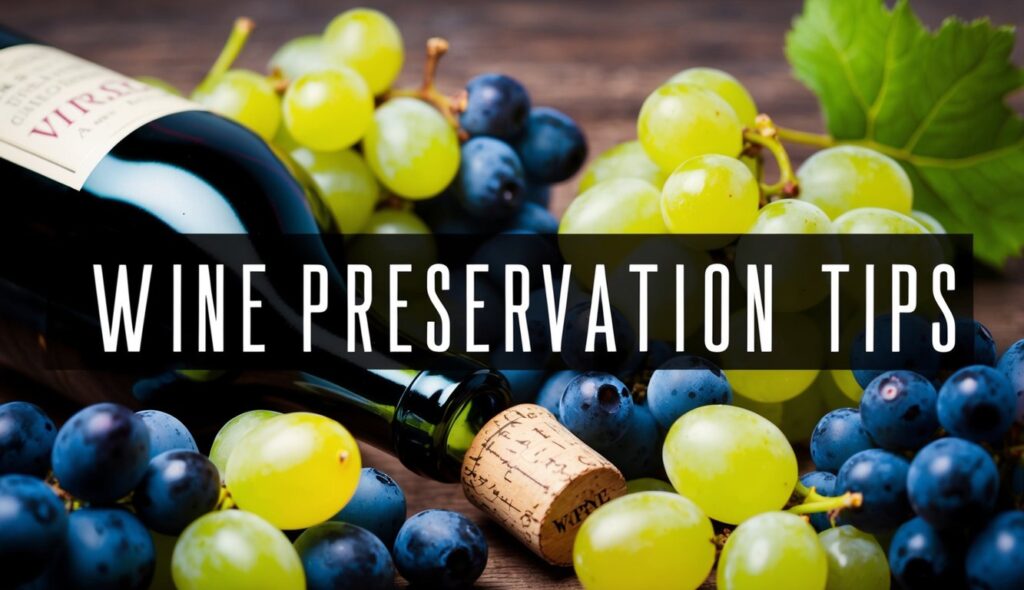How you store your wine plays a crucial role in preserving its quality and enhancing its flavors. Whether you’re a seasoned collector or a budding enthusiast, mastering the art of long-term wine storage can transform your wine collection into a treasure trove.
To maintain wine at its best, store bottles in a dark, cool place with a stable temperature. Ideally, the temperature should be between 45 to 65 degrees Fahrenheit, and the humidity level should stay between 50% to 70%.

Proper storage is not just about keeping wine safe; it’s about nurturing each bottle to reach its full potential. The aging process allows the flavors to meld and evolve, providing a richer taste experience.
For those who are serious about their wine collection, investing in climate-controlled wine cellars or coolers can make a significant difference. Wine refrigerators are also useful as they maintain consistency and provide protection from vibrations, which can disturb sediment in the wine.
Creating a well-curated collection is about more than just having the right quantity. It’s also about understanding how each type will mature over time. Certain wines, such as aged reds, require careful handling to develop their unique characteristics over the years. By following these principles, your collection becomes not just a hobby but a rewarding journey, ensuring each sip delivers the depth and complexity that great wines offer.
Fundamentals of Wine Storage
For long-term wine storage, maintaining the right environment is crucial. Key factors include temperature stability and humidity, both of which play significant roles in preserving wine quality over time.
Optimal Storage Conditions
Consistency is crucial in wine storage. A stable environment protects wine from rapid aging and spoilage. The best temperature for wine storage is around 55°F (13°C). This helps slow the aging process and preserve flavors.
Use a wine fridge if a consistent cellar temperature isn’t possible.
Darkness is another vital factor because exposure to UV light can alter the chemical makeup of wine, affecting its taste and appearance. Store your wine in a dark place, away from direct sunlight or harsh indoor lighting.
Vibration can disturb wine sediment and disrupt aging, so ensure wine rests in a stable space with limited movement.
Temperature and Humidity Control
While temperature is vital, humidity control is equally important. Ideal humidity levels sit between 55% and 65%, preventing corks from drying, which keeps air out and wine in good condition. If corks dry out, they can shrink, allowing oxygen in and potentially spoiling the wine.
Using a climate-controlled cabinet or cellar ensures both temperature and humidity stay stable.
Avoid storing wine in kitchen refrigerators long-term, as their cooler temperatures and lack of humidity can dry out corks. Regularly check humidity levels, and consider a humidifier to maintain optimal conditions.
Controlling these factors helps preserve the complex flavors and aromas in your wine, ensuring it’s at its best when you decide to open a bottle.
Types of Wine Storage Solutions
When choosing the right wine storage options, consider the space you have available and the environmental conditions each option can maintain. Focus on solutions that provide consistent temperature and humidity levels, and minimize exposure to light and vibrations.
Wine Cellars
Wine cellars offer a classic and effective way to store wine long-term. They provide a stable environment with controlled temperature and humidity.
Ideally, a wine cellar should maintain a constant temperature between 45-65°F (7-18°C) and humidity levels between 50% to 70% to protect corks and maintain wine quality.
Cellars are usually located underground, which helps keep them naturally cool and dark, reducing exposure to vibrations and light. You can create a professional wine storage environment by investing in a ducted wine cellar cooling system, which minimizes noise and vibration.
Wine Refrigerators
Wine refrigerators are perfect for those who do not have space for a cellar. They are designed to maintain specific temperature zones for different wine types.
Red wines and white wines can be stored at their ideal temperatures, preserving their taste and aroma. These appliances are compact and can fit in most homes, making them a practical option for urban living.
When using a wine refrigerator, keep in mind that consistent temperature is key, and ensure it does not dip below or rise above recommended levels. For varied collections, dual-zone refrigerators allow you to store both reds and whites at their optimal temperatures.
Wine Racks and Coolers
Wine racks and coolers provide flexibility in displaying and storing your wine. While they are not as controlled as cellars or refrigerators, they offer a simple and cost-effective solution for wine lovers.
You can place them in cool, dark areas of your home to reduce exposure to light and temperature fluctuations.
Racks are typically used more for short-term storage or display, while coolers provide a bit more temperature control. When using these options, remember to store wine bottles on their sides to keep the cork moist, preventing air from entering the bottle. Consider units with built-in coolers for a balance of aesthetics and functionality.
Maintaining the Quality of Stored Wine

To ensure the long-lasting quality of your stored wine, it is crucial to focus on proper cork moisture and positioning of bottles, as well as protecting them from light and vibration. These factors can significantly impact wine aging and preserve its taste and aroma.
Cork Moisture and Wine Bottle Positioning
Maintaining the moisture of wine corks is vital. Dry corks can lead to oxidation, altering the wine’s flavor and quality.
Always store your wine bottles horizontally. This keeps the cork moist, preventing air from entering the bottle. A dry cork shrinks, allowing oxygen to spoil the wine.
Check your wine storage area’s humidity. Ideal levels range between 60% and 80%. This prevents corks from drying out and ensures the wine ages properly. A simple device called a hygrometer can help monitor humidity levels effectively.
Maintaining these conditions helps protect the wine and enhance its longevity, keeping it delicious for years.
Protection from Light and Vibration
Light exposure can cause chemical reactions in wine that harm its taste and appearance. Store wine in dark areas or use UV-filtered glass on wine racks to shield bottles from harmful rays. This ensures better preservation of both flavor and aroma.
Limiting vibration is equally important. Vibrations disturb the sediment in wine, affecting its quality. Keep wine away from areas with constant movement, like near household appliances.
Minimize vibrations to let the wine age quietly and gracefully over time. This stability contributes to a more refined and enjoyable wine experience. For more expert tips on storing wine long-term, visit this resource on long-term wine storage.
Special Considerations for Different Wine Varietals

Long-term wine storage involves understanding the unique needs of various wine types. Important factors include temperature, humidity, and light, which must be managed carefully to ensure your wines mature gracefully.
Aging Red Wines
When storing red wine, keeping a consistent temperature between 10°C and 15°C (50°F to 59°F) is crucial.
Cabernet Sauvignon and Syrah benefit from longer aging due to their robust tannins and acidity. These elements soften over time, enhancing flavors and complexity.
Varietals like Nebbiolo also age beautifully but require patience, potentially developing rich, nuanced palettes over decades. Red wines with high alcohol or low tannin content, like some Merlots, may not improve much with age.
It’s important to store reds horizontally. This positioning keeps the cork moist, preventing air from spoiling your wine. Direct light exposure should be avoided to prevent degradation.
Storing White and Sparkling Wines
Chardonnay, Riesling, and Semillon are among the white wines that can benefit from aging, though they often require shorter aging periods than reds.
Ideal storage temperatures for whites range from 7°C to 13°C (45°F to 55°F). These wines generally have lower tannin levels and higher acidity, which can preserve flavors when stored properly.
Sparkling wines and many light white wines, such as some Pinot Grigios, tend to be consumed fresher to retain their crispness.
Keeping these wines in a dark environment is essential, as light can cause chemical reactions. Proper humidity (50%–70%) also ensures cork integrity, maintaining wine quality by preventing cork shrinkage that could allow oxidation.
Accessories and Tools for Wine Preservation

When you preserve wine, the right accessories can make a big difference. Wine stoppers are essential tools. They seal open bottles, helping to keep your wine fresh for days. Look for stoppers with a vacuum seal feature for added effectiveness.
Vacu Vin is a popular choice for wine enthusiasts. It offers a simple pump system that removes air from the bottle, preventing oxidation. This extends the life of your wine and maintains its flavor. It’s easy to use and often comes with two or more stoppers.
Humidity plays a crucial role in wine preservation. Keeping the right humidity level is important to protect the corks from drying out. To manage this, consider using a wine cooler with humidity control. This helps maintain the ideal environment for your collection.
Organizing your storage space also enhances preservation. Invest in a wine rack to keep bottles on their sides. This position helps keep the cork moist, further preventing air from entering the bottle.
Some enthusiasts prefer more advanced systems, like electric preservation gadgets. These can control both air and temperature, ensuring your wine stays as fresh as possible. Explore these varied tools to discover what suits your needs best.

